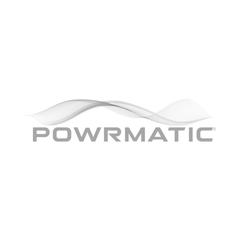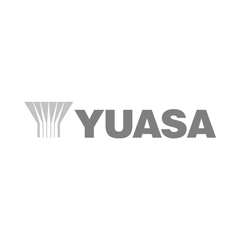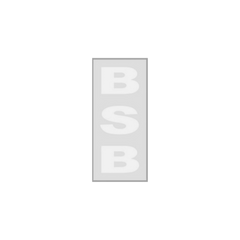Shop All
FSD-C Series - Galavanised Steel Blades, Installation Plate (IP)
From £67.66 excl. VATUnit price excl. VAT /UnavailableFSD-C series - Galavanised Steel Blades, Installation Plate (IP) & Rotatable Cleats (R-CL)
From £85.10 excl. VATUnit price excl. VAT /UnavailableFSD-TD Series - Type C, Galvanised Steel Blades, Easy Fix Angle Frame (AF)
From £157.83 excl. VATUnit price excl. VAT /UnavailableFSD-TD Series - Type S, Galvanised Steel Blades, EASY FIX Angle Frame (AF)
From £198.88 excl. VATUnit price excl. VAT /Unavailable
Brands
Frequently Asked Questions
What is the purpose of a fire damper in UK buildings?
What is the purpose of a fire damper in UK buildings?
Fire dampers are safety devices fitted where ventilation ducts or air transfer openings pass through fire resisting walls or floors. In the event of a fire they close automatically to prevent flames and hot gases from travelling through the ductwork and spreading to other compartments. Without them, fire and smoke can quickly travel throughout a building, endangering occupants and damaging property.
Which standards govern fire damper design and classification in the UK?
Which standards govern fire damper design and classification in the UK?
Fire dampers sold in the UK must comply with European standards. The primary fire resistance test is BS EN 13662, and classification is given under BS EN 135013, which uses the letters E, S and I to denote integrity, smoke leakage and insulation respectively. Dampers marked ES have been shown to maintain integrity while limiting smoke leakage. Products must also carry a CE mark in accordance with BS EN 15650 and be manufactured under factory production control. UK guidance documents such as Approved Document B and BS 9999:2017 refer to these standards when specifying dampers.
The other notable key ones you need are:
BS EN 12101-8:2011
- Title: Smoke and heat control systems – Part 8: Smoke control dampers.
- This is the harmonised European Standard that specifies requirements, test methods, and performance criteria for smoke control dampers.
- If a smoke damper is used in a smoke shaft system (typical in high-rise residential buildings), it must be CE/UKCA marked to BS EN 12101-8.
BS EN 1366 and Dampers
- 1. Fire Dampers
- BS EN 1366-2: Fire resistance tests for service installations – Part 2: Fire dampers
- This is the primary test standard for fire dampers (those designed to stop fire spread through ducts/walls).
- Tests the damper’s integrity (E) and, where relevant, insulation (I) when exposed to fire.
- Demonstrates how long the damper can prevent fire/smoke spread (e.g. E120, EI60).
- 2. Smoke Control Dampers
- BS EN 1366-10: Fire resistance tests for service installations – Part 10: Smoke control dampers
- This applies to dampers used in smoke control systems, e.g. those in smoke shafts in HRBs.
Tests for:
- Integrity (E)
- Insulation (I)
- Smoke leakage (S) at ambient and elevated temps
- Reliability (C) — cycling (open/close up to 10,000 times)
- Response to pressure (Pa) — e.g. 1500 Pa to simulate shaft pressures
- 3. How this links to BS EN 12101-8
- BS EN 12101-8 is the product standard for smoke control dampers.
- To get CE/UKCA marking to BS EN 12101-8, a damper must be tested to BS EN 1366-10.
In other words:
- 1366 = test standards (lab performance evidence)
- 12101-8 = product standard (design, certification, marking)
- 4. Fire vs Smoke Dampers in practice
- Fire damper: Tested to EN 1366-2, CE-marked to EN 15650.
- Smoke control damper: Tested to EN 1366-10, CE/UKCA-marked to EN 12101-8.
✅ In summary:
- The BS EN 1366 series provides the fire resistance test methods that underpin the certification of dampers.
- Fire dampers → EN 1366-2 → EN 15650 product standard
- Smoke control dampers → EN 1366-10 → EN 12101-8 product standard
Further standard on the design and installation are provided within the Damper technical bulletin.
How do curtain blade and multi blade fire dampers differ?
How do curtain blade and multi blade fire dampers differ?
Curtain blade dampers use a single accordion style blade suspended by a fusible link. When the link melts in a fire, the blade drops to close the opening. Multi blade dampers employ several rotating blades connected by a linkage and spring mechanism; the blades snap shut when the link releases. Multi blade dampers can incorporate position switches to confirm closure and are easier to reset after testing.
What is the difference between static and dynamic fire dampers?
What is the difference between static and dynamic fire dampers?
A static fire damper relies on gravity or a light spring to close and is suitable for systems where fans shut down during a fire. A dynamic damper uses heavier springs or actuators so it can overcome airflow and close even while fans run. Dynamic dampers are required in systems where the HVAC fans are part of smoke control or are programmed to continue running.
How often must fire dampers be tested in the UK?
How often must fire dampers be tested in the UK?
The British Standard BS 9999:2017 states that all fire dampers must be tested by a competent person on completion of installation and at regular intervals not exceeding one year. Spring operated dampers must be tested annually, and those in dust laden or similar environments should be tested more frequently. Other guidance notes that the maximum interval between tests should never exceed 12 months; high risk areas such as hospitals may warrant more frequent testing.
See the attached technical bulletin for more info on HRB’s and other buildings requiring varying degrees of consideration and more frequent testing.
Please see technical bulletin for more details
Who is responsible for fire damper maintenance under UK law?
Who is responsible for fire damper maintenance under UK law?
Regulatory Reform (Fire Safety) Order 2005 requires that all fire safety equipment (including smoke control systems and their dampers) be kept in efficient working order and tested/maintained regularly.
- BS 9999:2017 (Fire safety in the design, management and use of buildings) and BS EN 12101 series (for smoke control systems) give more detailed recommendations.
- Typical inspection/testing frequencies used in practice:
- Visual inspection: At least once a month for control panels, indicators, and accessible parts of the system.
- Functional testing of dampers: At least once a year (often recommended every 6 months in HRBs due to higher risk). This involves checking that each damper opens/closes as intended, with proper feedback to the control system.
- Comprehensive servicing: Annually by a competent contractor.
Grenfell-related regulatory changes: For HRBs (18m+ or 7+ storeys), the Fire Safety (England) Regulations 2022 require responsible persons to carry out monthly checks of lifts and essential firefighting equipment — while this doesn’t name dampers explicitly, smoke control systems fall within “essential equipment” in most fire risk assessments.
👉 So in practice:
- Check (visual/indicator tests) – monthly.
- Full functional test of dampers – every 6–12 months, depending on the building’s risk assessment.
What about smoke dampers and combination fire smoke dampers?
What about smoke dampers and combination fire smoke dampers?
Smoke dampers are devices that close in response to smoke detection to prevent smoke migration through duct work and air transfer openings. Combination fire smoke dampers perform both functions and carry an ES classification, meaning they provide fire integrity and limit smoke leakage. In UK installations they are specified where both fire and smoke control are required, such as protected escape routes or shafts. Like fire dampers, combination dampers must be tested at least annually under BS 9999.
See link to technical bulletin for HRB’s or other buildings of increased risk that may have varying inspection periods depending upon the fire risk assessments.
See our Technical Bulletin for more detail
What fire resistance ratings are available and how are they applied?
What fire resistance ratings are available and how are they applied?
Fire dampers are typically rated for 1½ hours or 3 hours of fire resistance. The chosen rating should correspond to the fire resistance period of the barrier; BS 9999 and Approved Document B require that the damper’s classification matches or exceeds the barrier’s rating. For example, a 1½ hour damper is appropriate for walls or floors rated less than three hours, while a 3 hour damper is used for higherrated barriers.
What factors should UK designers consider when selecting a fire or smoke damper?
What factors should UK designers consider when selecting a fire or smoke damper?
Designers should verify that the damper is CE marked to BS EN 15650 and has been tested to BS EN 13662, with an appropriate E or ES classification under BS EN 135013. They should also confirm that the damper’s fire resistance rating meets the barrier’s rating, and determine whether a static or dynamic type is required based on fan shutdown strategy. For applications requiring smoke control, a smoke or combination damper with an S classification should be selected. Finally, the designer must ensure there is adequate access for annual testing and that the building owner understands their maintenance obligations under BS 9999 and the Fire Safety Order.
Refer to technical bulletin for more detailed answers.
How do fire dampers operate in UK installations—are they manual or automatic?
How do fire dampers operate in UK installations—are they manual or automatic?
Most fire dampers use a fusible link that melts at about 72°C; when the link releases, spring loaded blades or a curtain drop shut and seal the duct. Some dampers can be connected to a fire alarm or building management system so they close automatically without relying on a fusible link. After activation or testing, certain models require manual resetting of the fusible link, while motorised “combination” dampers can be reset remotely via the control system.
What is a “drop test” and why is it important?
What is a “drop test” and why is it important?
A drop test is a functional test where the fusible link is manually released to check that the damper’s blades close fully and seal the duct. It also confirms that the damper can be reset correctly afterwards. British Standard BS 9999:2017 requires dampers to be tested on commissioning and at least annually, making drop tests an essential part of a building’s fire safety routine.
Who is considered a ‘competent person’ to test fire dampers?
Who is considered a ‘competent person’ to test fire dampers?
UK guidance states that fire damper inspections must be carried out by a competent person—someone with sufficient knowledge and training in damper operation and safety regulations. It is important to use trained professionals to ensure that dampers are installed, inspected and maintained correctly.
See technical bulletin for more details
Do dampers in dusty or high risk environments need more frequent testing?
Do dampers in dusty or high risk environments need more frequent testing?
Yes. BS 9999 requires all dampers to be tested at intervals not exceeding 12 months. However, spring operated dampers or those located in dust laden atmospheres may need more frequent testing to ensure they are not obstructed by debris. Building owners should assess the environment and consult specialists to determine appropriate testing frequencies.
Must fire dampers be accessible for inspection and cleaning?
Must fire dampers be accessible for inspection and cleaning?
Proper access is essential. Dampers should be installed with access panels or hatches so that inspectors can see and operate the fusible link and blades. Without adequate access, you cannot test or clean the device, which may invalidate fire safety compliance.
What does UKCA marking mean, and do fire dampers need it?
What does UKCA marking mean, and do fire dampers need it?
The UKCA (UK Conformity Assessed) mark is the UK equivalent of the CE mark and indicates that a product meets relevant UK regulations. A news release explains that while CE marking for construction products is still accepted in Great Britain, manufacturers re obtaining UKCA certification to demonstrate compliance with UK regulatory requirements and future proof their product supply. Specifiers may increasingly prefer UKCA marked dampers.
Are CE marked dampers still acceptable in Great Britain?
Are CE marked dampers still acceptable in Great Britain?
Yes. CE marking remains accepted indefinitely for fire dampers and other construction products placed on the Great Britain market. However, obtaining UKCA certification provides additional assurance that the product meets UK regulatory requirements.
Do dampers need to be tested immediately after installation?
Do dampers need to be tested immediately after installation?
BS 9999 requires that dampers be inspected and tested by a competent person upon completion of installation and at least once every year thereafter. This initial test (often a drop test) ensures that the damper has been installed correctly and will operate properly in an emergency.
See technical bulletin for more details
Are training resources available for damper inspection and maintenance?
Are training resources available for damper inspection and maintenance?
Yes. training courses are available to teach installers and maintenance teams how to inspect, test and reset dampers correctly. The Regulatory Reform (Fire Safety) Order 2005 places responsibility on employers or building owners to ensure that fire safety systems—including dampers—are maintained by competent persons and that appropriate records are kept.
What is the difference between a smoke damper and a smoke control damper?
What is the difference between a smoke damper and a smoke control damper?
Both devices limit smoke spread, but a smoke damper is typically used in passive smoke systems to maintain the integrity of smoke barriers. It closes automatically when smoke is detected, blocking smoke and air movement through a duct or opening. A smoke control damper, on the other hand, is certified to vent smoke in an engineered smoke ventilation system; it can open to allow smoke to be extracted from the fire floor while remaining closed on other levels.
How does a smoke control damper operate during a fire?
How does a smoke control damper operate during a fire?
In a multistorey smoke control system, smoke spreads from a fire activates sensors that trigger the smoke ventilation system. The damper on the affected floor moves to an open position, allowing smoke to be drawn into the shaft, while dampers on other floors remain shut to maintain compartmentation. Smoke is then extracted up through the shaft—either mechanically via a fan or naturally—leaving the floor clear for occupants and firefighters.
What standards apply to smoke control dampers in the UK?
What standards apply to smoke control dampers in the UK?
Smokecontrol dampers must meet BS EN 121018:2011 for smoke and heat control systems. They should also carry a CE or UKCA mark and be accompanied by a Declaration of Performance, demonstrating compliance with the UK Construction Products Regulations. Noncertified products can jeopardise smokecontrol systems and are not permitted.
The key ones you need are:
BS EN 12101-8:2011
- Title: Smoke and heat control systems – Part 8: Smoke control dampers.
- This is the harmonised European Standard that specifies requirements, test methods, and performance criteria for smoke control dampers.
- If a smoke damper is used in a smoke shaft system (typical in high-rise residential buildings), it must be CE/UKCA marked to BS EN 12101-8.
BS EN 1366 and Dampers
- 1. Fire Dampers
- BS EN 1366-2: Fire resistance tests for service installations – Part 2: Fire dampers
- This is the primary test standard for fire dampers (those designed to stop fire spread through ducts/walls).
- Tests the damper’s integrity (E) and, where relevant, insulation (I) when exposed to fire.
- Demonstrates how long the damper can prevent fire/smoke spread (e.g. E120, EI60).
- 2. Smoke Control Dampers
- BS EN 1366-10: Fire resistance tests for service installations – Part 10: Smoke control dampers
- This applies to dampers used in smoke control systems, e.g. those in smoke shafts in HRBs.
Tests for:
- Integrity (E)
- Insulation (I)
- Smoke leakage (S) at ambient and elevated temps
- Reliability (C) — cycling (open/close up to 10,000 times)
- Response to pressure (Pa) — e.g. 1500 Pa to simulate shaft pressures
- 3. How this links to BS EN 12101-8
- BS EN 12101-8 is the product standard for smoke control dampers.
- To get CE/UKCA marking to BS EN 12101-8, a damper must be tested to BS EN 1366-10.
In other words:
- 1366 = test standards (lab performance evidence)
- 12101-8 = product standard (design, certification, marking)
- 4. Fire vs Smoke Dampers in practice
- Fire damper: Tested to EN 1366-2, CE-marked to EN 15650.
- Smoke control damper: Tested to EN 1366-10, CE/UKCA-marked to EN 12101-8.
✅ In summary:
- The BS EN 1366 series provides the fire resistance test methods that underpin the certification of dampers.
- Fire dampers → EN 1366-2 → EN 15650 product standard
- Smoke control dampers → EN 1366-10 → EN 12101-8 product standard
Other relevant design standards/guidance:
- BS EN 12101 series – covers the wider smoke and heat control system (fans, ducts, dampers, control panels).
- BS 9999:2017 – provides fire safety management and design guidance, including smoke shafts.
- BS 9991:2015 – specifically for fire safety in residential buildings, including high-rise smoke control systems.
- Building Regulations Approved Document B (ADB) – sets out the functional fire safety requirements; smoke control systems (including dampers) must meet these requirements, often by following the BS EN 12101 route.
- CIBSE Guide E and SCA (Smoke Control Association) guidance – practical design/installation advice.
See technical bulletin for more details
Why is certification important for smoke control dampers?
Why is certification important for smoke control dampers?
Non certified products can compromise the integrity of smoke ventilation systems and compartmentation. Using dampers that are tested and certified to the correct standard (BS EN 121018) ensures they will perform reliably under fire conditions and comply with Approved Document B and BS 9999.
Where are smoke control dampers typically installed?
Where are smoke control dampers typically installed?
Smoke control dampers are used in engineered smoke control systems serving multistorey buildings such as apartment blocks or commercial smoke extraction shafts. They are placed within ducts or ventilation openings and are designed either as mechanical devices operated by actuators or intumescent devices that react to heat.
Do smoke control dampers open or close when smoke is detected?
Do smoke control dampers open or close when smoke is detected?
In an engineered system, smoke control dampers on the fire floor open to vent smoke, while dampers on other levels remain closed to preserve compartmentation. In passive systems, smoke dampers may close when smoke is detected to prevent smoke circulation.
How do smoke dampers function in passive systems versus smoke control systems?
How do smoke dampers function in passive systems versus smoke control systems?
In a passive smoke system, a smoke damper closes upon detection of smoke—usually by a duct mounted smoke detector—to block smoke and air movement. In an engineered smoke control system, smoke control dampers open selectively to extract smoke from the fire floor and maintain smoke free escape routes.
What is a multi compartment smoke control damper?
What is a multi compartment smoke control damper?
A multi compartment smoke control damper is designed to vent smoke from the fire floor while keeping other levels sealed. The Smoke Control Association guidance notes that the only product able to perform both functions (venting and maintaining separation) is a multi compartment smoke control damper CE marked to EN 121018. Approved Document B and BS 9999 reinforce this requirement.
Do smoke control dampers require CE or UKCA marking?
Do smoke control dampers require CE or UKCA marking?
Yes. Smokecontrol dampers used in UK smokeventilation systems should be CEmarked (or UKCAmarked) to EN 121018. This certification indicates that the damper has been tested and meets the performance criteria for smoke control. Without this certification, the product may not comply with UK building regulations.
Are there installation differences between smoke dampers and fire dampers?
Are there installation differences between smoke dampers and fire dampers?
Smoke dampers do not necessarily have to be installed in sleeves; they can be mounted directly into the duct, provided that the joints between the damper frame and duct are sealed to prevent air leakage. Fire dampers, by contrast, are typically installed in sleeves to ensure they maintain the fireresistance rating of the barrier. Smokecontrol dampers used in vertical shafts must meet BS EN 121018:2011 for smoke and heat control systems. They should also carry a CE or UKCA mark and be accompanied by a Declaration of Performance, demonstrating compliance with the UK Construction Products Regulations. Noncertified products can jeopardise smokecontrol systems and are not permitted.
You should also refer to the relevant design, installation and certification standards.
The key ones you need are:
BS EN 12101-8:2011
- Title: Smoke and heat control systems – Part 8: Smoke control dampers.
- This is the harmonised European Standard that specifies requirements, test methods, and performance criteria for smoke control dampers.
- If a smoke damper is used in a smoke shaft system (typical in high-rise residential buildings), it must be CE/UKCA marked to BS EN 12101-8.
BS EN 1366 and Dampers
- 1. Fire Dampers
- BS EN 1366-2: Fire resistance tests for service installations – Part 2: Fire dampers
- This is the primary test standard for fire dampers (those designed to stop fire spread through ducts/walls).
- Tests the damper’s integrity (E) and, where relevant, insulation (I) when exposed to fire.
- Demonstrates how long the damper can prevent fire/smoke spread (e.g. E120, EI60).
- 2. Smoke Control Dampers
- BS EN 1366-10: Fire resistance tests for service installations – Part 10: Smoke control dampers
- This applies to dampers used in smoke control systems, e.g. those in smoke shafts in HRBs.
Tests for:
- Integrity (E)
- Insulation (I)
- Smoke leakage (S) at ambient and elevated temps
- Reliability (C) — cycling (open/close up to 10,000 times)
- Response to pressure (Pa) — e.g. 1500 Pa to simulate shaft pressures
- 3. How this links to BS EN 12101-8
- BS EN 12101-8 is the product standard for smoke control dampers.
- To get CE/UKCA marking to BS EN 12101-8, a damper must be tested to BS EN 1366-10.
In other words:
- 1366 = test standards (lab performance evidence)
- 12101-8 = product standard (design, certification, marking)
- 4. Fire vs Smoke Dampers in practice
- Fire damper: Tested to EN 1366-2, CE-marked to EN 15650.
- Smoke control damper: Tested to EN 1366-10, CE/UKCA-marked to EN 12101-8.
✅ In summary:
- The BS EN 1366 series provides the fire resistance test methods that underpin the certification of dampers.
- Fire dampers → EN 1366-2 → EN 15650 product standard
- Smoke control dampers → EN 1366-10 → EN 12101-8 product standard
Other relevant design standards/guidance:
- BS EN 12101 series – covers the wider smoke and heat control system (fans, ducts, dampers, control panels).
- BS 9999:2017 – provides fire safety management and design guidance, including smoke shafts.
- BS 9991:2015 – specifically for fire safety in residential buildings, including high-rise smoke control systems.
- Building Regulations Approved Document B (ADB) – sets out the functional fire safety requirements; smoke control systems (including dampers) must meet these requirements, often by following the BS EN 12101 route.
- CIBSE Guide E and SCA (Smoke Control Association) guidance – practical design/installation advice.
See Technical Bulletin for more details

















